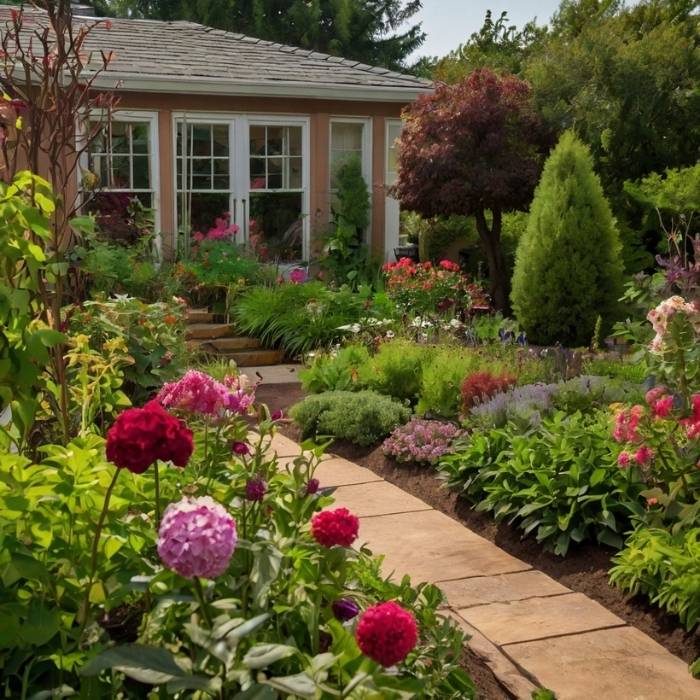Gardener’s Delight: Tips, Tricks, and Inspiration for a Thriving Garden
Gardening is more than just a hobby—it’s a way to connect with nature, cultivate beauty, and enjoy the fruits (and vegetables!) of your labor. Whether you’re a seasoned green thumb or a beginner with a newfound passion for plants, creating a garden that delights the senses is within your reach. In this guide, we’ll explore practical tips, creative ideas, and expert advice to help you transform your outdoor space into a Gardener’s Delight paradise.
Why Gardening Brings Joy
Gardener’s Delight is a rewarding activity that offers countless benefits. It’s not just about growing plants; it’s about nurturing life, reducing stress, and creating a space that reflects your personality. Studies have shown that spending time in nature can improve mental health, boost creativity, and even lower blood pressure. Plus, there’s nothing quite like the satisfaction of harvesting your own homegrown tomatoes or admiring a bed of blooming flowers you planted yourself.
Planning Your Garden: Start with a Vision
Before you grab your shovel, take some time to plan your garden. A well-thought-out design will save you time, money, and effort in the long run.
1. Assess Your Space
- Determine the size and layout of your garden. Consider factors like sunlight, soil type, and drainage.
- If you have limited space, explore vertical gardening or container gardening options.
2. Choose a Theme
- Do you want a vegetable garden, a flower garden, or a mix of both? Perhaps you’d like a Zen-inspired space with calming water features and minimalist plants.
- Your theme will guide your plant selection and design choices.
3. Sketch a Layout
- Draw a rough sketch of your garden, marking areas for different plants, pathways, and features like benches or birdbaths.
- Group plants with similar needs together to make maintenance easier.
Selecting the Right Plants
The plants you choose will determine the success and beauty of your garden. Here’s how to make the best selections:
1. Know Your Zone
- Research your USDA hardiness zone to understand which plants thrive in your climate.
- Choose native plants whenever possible—they’re adapted to your region and require less maintenance.
2. Mix Perennials and Annuals
- Perennials like lavender and hostas come back year after year, providing a reliable foundation for your garden.
- Annuals like petunias and marigolds add vibrant color and can be changed out seasonally.
3. Consider Pollinators
- Attract bees, butterflies, and hummingbirds by planting pollinator-friendly flowers like sunflowers, coneflowers, and zinnias.
- Pollinators not only add life to your garden but also help your plants thrive.
Soil and Fertilizer: The Foundation of a Healthy Garden
Healthy soil is the key to a thriving garden. Here’s how to ensure your soil is in top condition:
1. Test Your Soil
- Use a soil test kit to check the pH and nutrient levels. Most plants prefer a pH between 6.0 and 7.0.
- Amend your soil with compost, peat moss, or other organic matter to improve its structure and fertility.
2. Mulch Wisely
- Mulch helps retain moisture, suppress weeds, and regulate soil temperature.
- Use organic mulch like wood chips or straw for added nutrients as it decomposes.
3. Fertilize Regularly
- Choose a fertilizer that matches your plants’ needs. For example, vegetables benefit from a balanced fertilizer, while flowering plants may need more phosphorus.
- Avoid over-fertilizing, as this can harm your plants and the environment.
Watering Tips for a Lush Garden
Proper watering is essential for plant health, but it’s easy to overdo it or underwater. Follow these tips to get it right:
1. Water Deeply and Infrequently
- Deep watering encourages roots to grow deeper, making plants more drought-resistant.
- Aim to water early in the morning to reduce evaporation and prevent fungal diseases.
2. Use Drip Irrigation
- Drip irrigation systems deliver water directly to the roots, minimizing waste and ensuring even coverage.
- They’re especially useful for vegetable gardens and flower beds.
3. Monitor Soil Moisture
- Stick your finger into the soil to check for moisture. If it feels dry an inch below the surface, it’s time to water.
- Consider using a moisture meter for more accurate readings.
Creative Garden Features to Delight the Senses
A garden should be a feast for the senses. Here are some ideas to make your space truly special:
1. Add a Water Feature
- The sound of running water is incredibly soothing. Consider adding a small fountain, pond, or birdbath to your garden.
2. Incorporate Fragrant Plants
- Plants like roses, jasmine, and lavender add a delightful scent to your garden.
- Place them near seating areas or pathways where their fragrance can be enjoyed.
3. Create a Seating Area
- A cozy bench or set of chairs allows you to relax and enjoy your garden.
- Add a pergola or umbrella for shade on sunny days.
4. Light It Up
- Solar-powered garden lights can highlight your favorite plants and create a magical atmosphere at night.
- String lights or lanterns add a warm, inviting glow.
Overcoming Common Gardening Challenges
Even the most experienced gardeners face challenges. Here’s how to tackle some common issues:
1. Pests and Diseases
- Identify pests early and use organic solutions like neem oil or insecticidal soap.
- Practice crop rotation and proper spacing to prevent diseases.
2. Weeds
- Pull weeds regularly before they go to seed.
- Use mulch or ground cover plants to suppress weed growth.
3. Extreme Weather
- Protect plants from frost with row covers or cloches.
- Provide shade during heatwaves using shade cloth or temporary structures.
The Joy of Harvesting
One of the greatest joys of gardening is reaping what you’ve sown. Whether it’s a basket of fresh vegetables, a bouquet of flowers, or simply the satisfaction of a job well done, harvesting is the ultimate reward.
1. Harvest at the Right Time
- Pick vegetables when they’re ripe but still tender.
- Cut flowers in the morning when they’re most hydrated.
2. Preserve Your Bounty
- Can, freeze, or dry excess produce to enjoy it year-round.
- Share your harvest with friends and neighbors—it’s a great way to spread joy.
Final Thoughts
Gardening is a journey, not a destination. Each season brings new opportunities to learn, grow, and create. Whether you’re tending to a small balcony garden or a sprawling backyard oasis, the delight of gardening lies in the process itself. So roll up your sleeves, get your hands dirty, and let nature work its magic.
By following these tips and embracing your creativity, you’ll soon have a garden that’s not only a Gardener’s Delight to behold but also a source of endless joy and inspiration. Happy gardening!

